Hello my gardening friends! As I alluded to in my recent updates post, I have a really cool project to share with you today. If you’ve been reading my blog for a little while then you know that I’m big into permaculture, and my husband Joel is even more so than me. He has taken the PDC (Permaculture Design Course) along with other courses, and has also done a lot of work in the field. If you don’t know what permaculture is, you can start by reading my Permaculture 101 series: The Basics, Zones, and Forest Gardens. I’m sure more will be added to this series over time as well, as permaculture is a huge topic! But for now Joel and I are going to go in depth on how to build a permaculture swale planting bed.
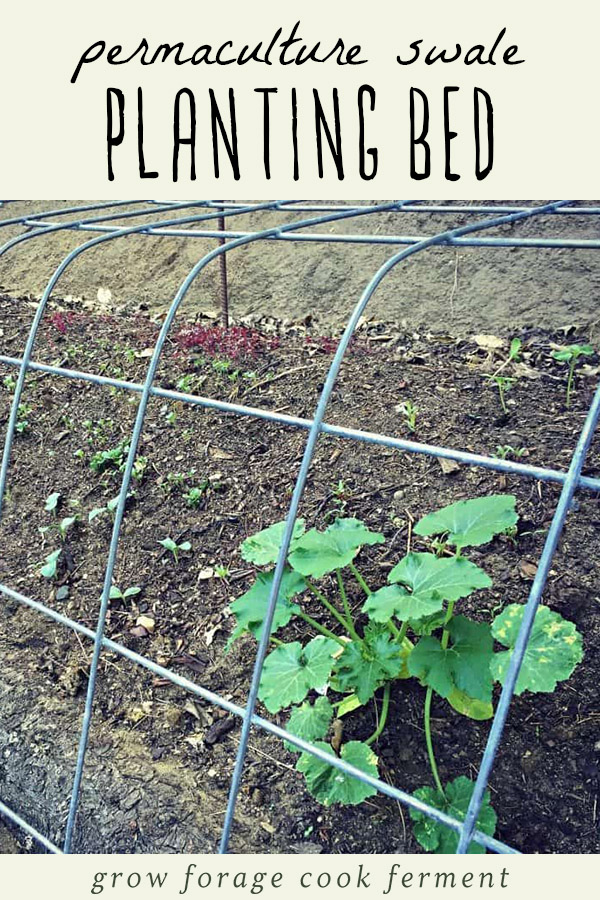
This planting mound, or bed, can be created in many ways. The easiest way is to use the topsoil excavated from the swale itself, but often other materials are already on hand and can be incorporated into the mound design. I call this a debris mound, and it’s not so different than building a compost pile.
When choosing the placement of your swale there may be grass, weeds, brambles, leaves, bushes or even small trees that are in the way of the excavation (make sure none of these plants are valuable and consider transplanting if that’s the case). These materials can all be, and in my opinion should be, built into the mound.
Now to start. This may seem backwards, but you actually build the mound before digging the swale. Gather the largest pieces of debris, roots, tree trunks, limbs and branches and place them on the contour where the mound will be. Then add a layer of green material like weeds, grass or brambles. Then go with a layer of brown material like leaves, cardboard, or old straw.
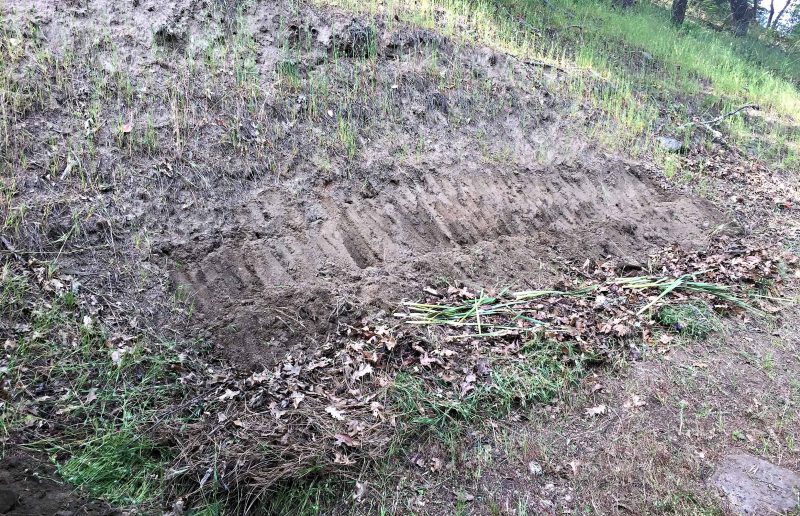
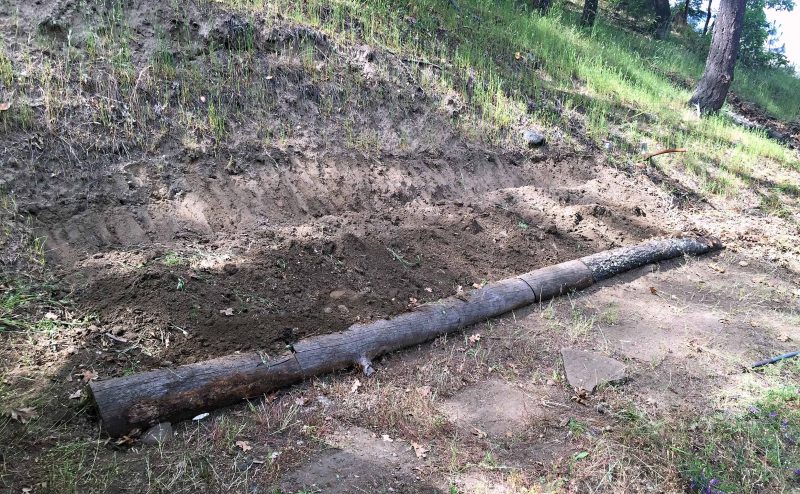
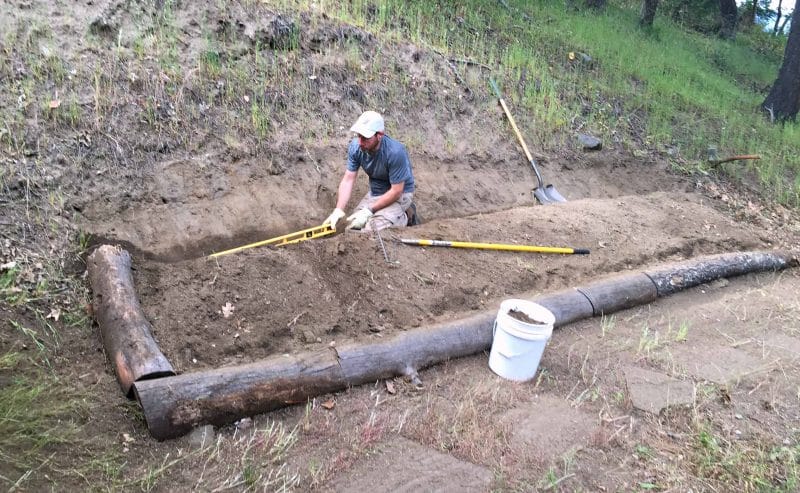
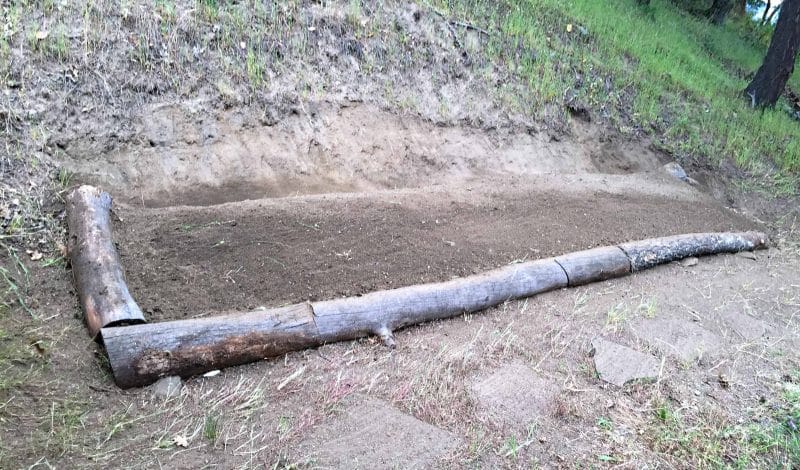
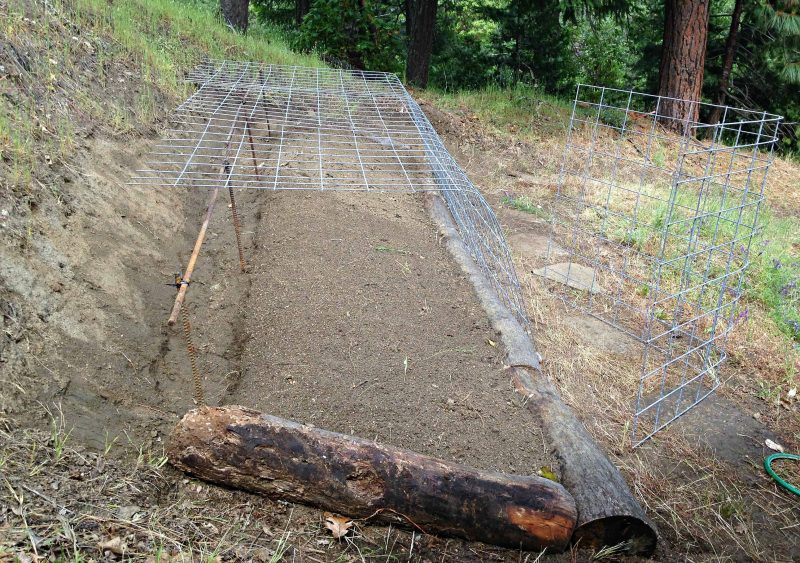
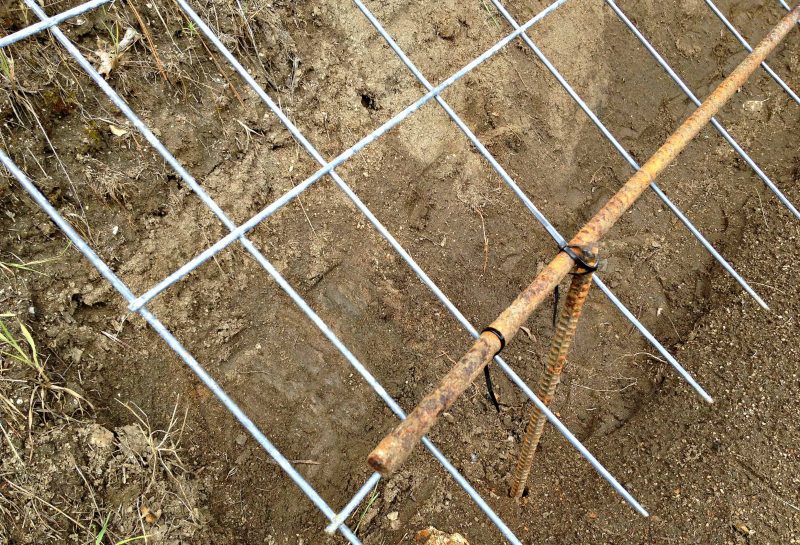
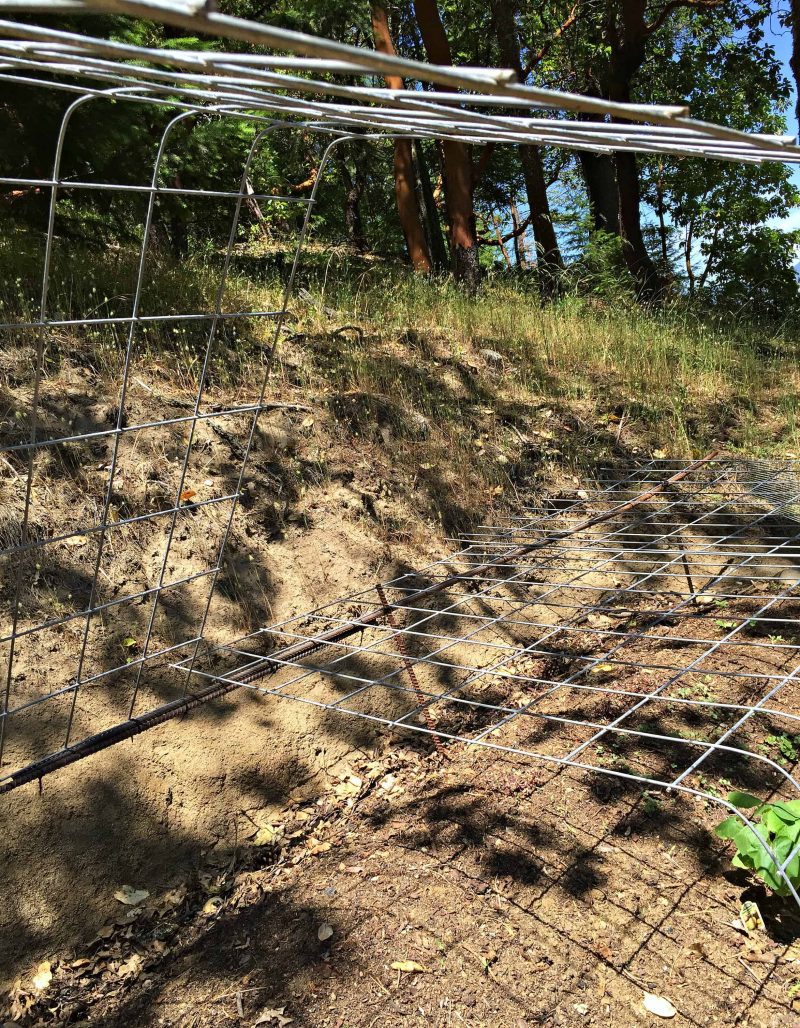
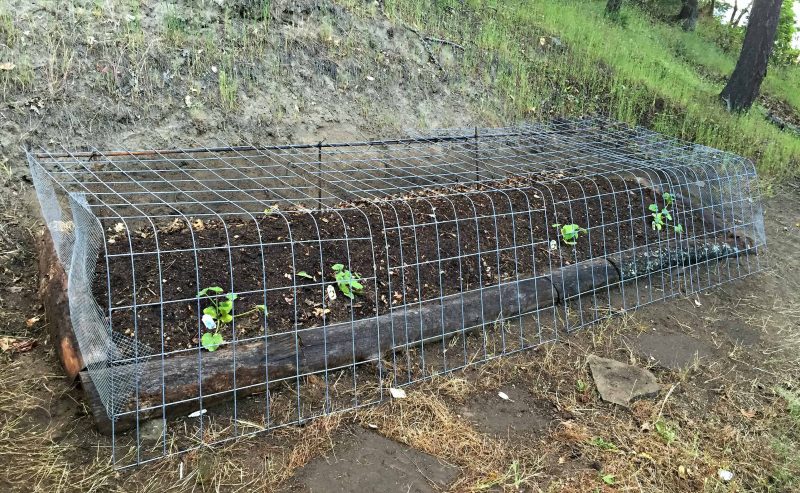
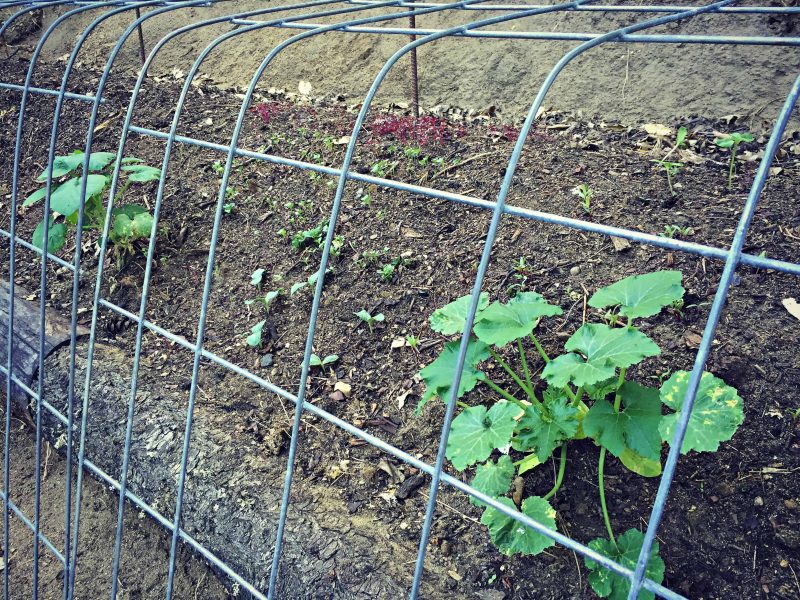
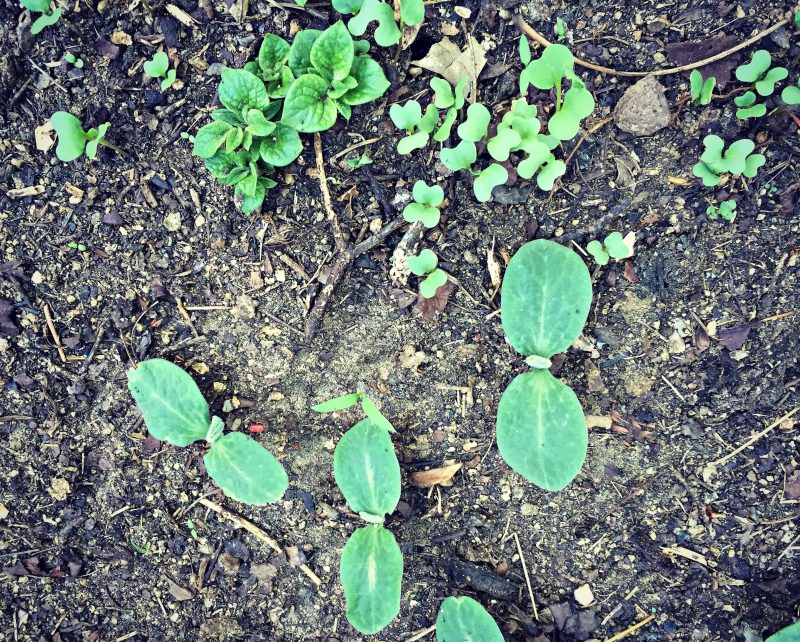
Potato, collard greens and butternut squash seedlings
As you can see we planted things really close, but it doesn’t concern me too much. Plants mature at different rates and we’ll thin as needed. It will become a mini food forest, I hope!
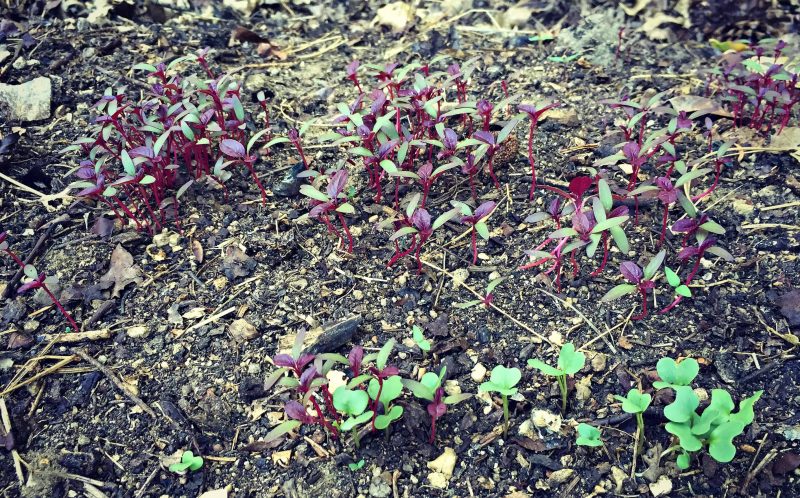
Amaranth and collard greens seedlings
Making this bed took a good day or two of work, but in reality it wasn’t that difficult to build. It’s a great way to use rainwater to your advantage by allowing it to soak right into your bed. You can even take it a step further and make it into a hugelkultur bed, which is similar, but bigger and with downed or rotting logs buried under the mound. The idea here is that once the buried wood has soaked up water from the ground and permeating rainfall it will slowly release this moisture to the planing bed built atop it. Also, as the wood decays and breaks down it releases nitrogen into the soil to help with plant growth.
As you can see there are so many different permaculture ideas to help you with growing more plants. The really cool thing is that once you have these systems in place it means less work for you in the future. I am so excited about our new planting bed and I can’t wait to reap the bounty at the end of the summer. It will be a fun experiment and I’ll keep you updated on it’s progress!
If you’re ready to jump into creating a permaculture landscape around your home, start with our Permaculture Gift Guide or one of these great Backyard Permaculture Projects!

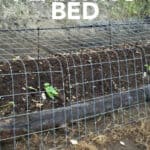
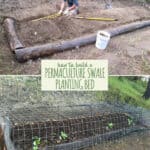
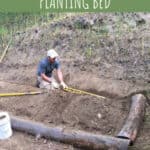
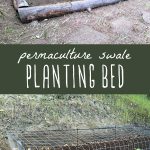

Just how tall is the grid? Once the amaranth, chard, collards, squash and other plants grow up through the grid, how do you keep the deer from eating the top growth? There aren’t that many plants that stay short. Also, once the plants have grown through the grid, it seems like it would be hard, if not impossible to lift it off for weeding and even harvesting some plants like squash. How do you reach the area against the slope to weed it? Seems like an awkward reach from the front. If you haven’t gone through at least one growing season, how do you know this will work?
I have a similar idea that i call “open book planting beds” but i use a recycled pallet to “divide” a paired bed that directs water into the bed were the plant roots are. http://www.allotment-ideas.co.uk/open-book.
But essentially both our ideas are along the same lines.
I read a book on native American techniques. They never mention watering… but they always grew on bends in rivers
I like this idea enough that I built one in my backyard a couple years ago. It’s close enough to the house that I was able to divert my roof runoff into it. I like the deer-proof cage idea. If I ever get out of the city, I’ll definitely keep that one in mind.
Did you plan a place for runoff on one end in the case that the swale overflows? I would hate to see the growing bed washed away during a downpour.
Yes, there is a place for water runoff on one end, although here in southern Oregon we have extremely dry summers so it’s really no threat to our plants until fall/winter.
The photos and step-by-step instructions are extremely helpful. Thanks for such a timely article.
I was just thinking of how to do this last night – you read my permaculture mind! Thanks so much!
This look very interesting. I’m going to have to remember this for when I finally save up enough to buy my land.
Thanks for sharing.
awesome stuff here, If I was in the PNW I also would enjoy having a place
1) where there is actual water (rain) 2) having a place to do this -no woods in central valley, CA :(
3) guess I’ll just have to be a city girl and used my raised beds.
When we first started we did our own mulch. So easy to take any food scraps (no meat!) and put
them into a hole, also newspapers & cardboard and cover with dirt every time. We would water them
sometimes. The mulch makes such great worms!
SO nice to see worms in a garden! after all, they are our workers under the soil!!!